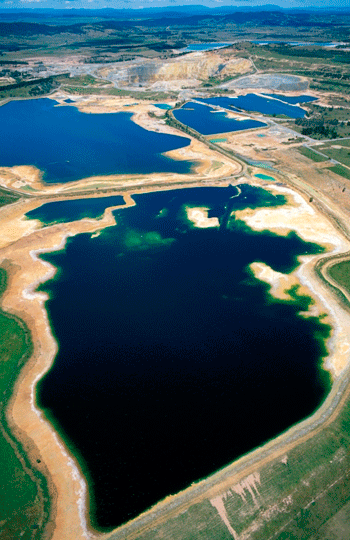
|
Published: 4 July 2011
Mining industry turns to saline water
A CSIRO research team is investigating the use of saline water in mining and mineral processing to increase the industry’s water efficiency.

|
|
A mine tailings dam: in future, saline water from processing could be recycled to reduce demand for higher quality water. Credit: ScienceImage
|
Dr Hal Aral from the Minerals Down Under Flagship says the industry is facing ‘desperate times’ with the combination of water scarcity, declining ore grades, expanding hydrometallurgical operations and escalating production pressures.
‘Highly saline underground waters are often the only water available to miners in inland Australia,’ says Dr Aral. ‘And in northern Chile, seawater is pumped tens of kilometres to mine sites at higher altitudes.’
Dr Aral says Australia’s mining industry’s water use increased by 29 per cent between 2000–01 and 2004–05, when it reached two per cent of the total national water consumption.
The CSIRO research focuses on using seawater and saline underground water that isn’t pre-treated, and recycling it where possible. This could be used in physical processes such as crushing, grinding and flotation, magnetic and gravity separation, as well as a diluting agent in lixiviant preparation (a liquid used to selectively extract metals from an ore or mineral).
Although saline water can corrode pumps, pipes and other components at mine and mill sites, Dr Aral says the advantages outweigh the disadvantages where fresh water is unavailable.
In one case study, researchers found a South Australian copper concentrate?producing company could reduce its bore water consumption by 260 tonnes per hour by recycling saline water from processing. This translates into a saving of about $250 000 per year.



